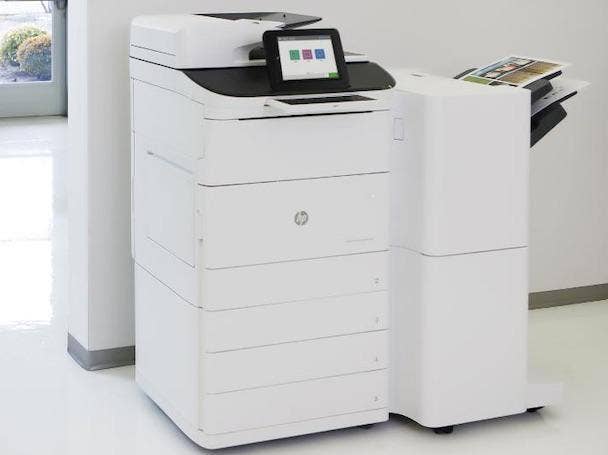HP CEO Lores: Channel Partners Driving 'Great Momentum' On Managed Print
Revenue for managed print services at HP is on the rise, as is the company’s commercial PC revenue.

HP Inc. saw double-digit revenue growth in managed print services during its latest quarter, partly offsetting the company's continued decline in supplies revenue, HP reported Tuesday.
While HP does have some direct contracts for managed print services (MPS), HP's recently appointed CEO, Enrique Lores, said Tuesday that MPS partners have been critical to the growth.
[Related: Partners: HP's Printer Shift Will Help To Drive Managed Print Services]
"We are getting great momentum with our channel partners in the contractual space, and this momentum is now translating into sales," Lores said during a call Tuesday with reporters and analysts.
Notably, the company's MPS contracts include HP-branded print supplies by default.
Lores also said HP is on a promising trajectory in its 3-D printing business, where the number of printed parts that were produced with HP’s Jet Fusion systems has been surging over the past year.
“I was pleased to see confidence and double-digit growth in its PaaS (Printing as a Service) business and industrial 3D printing where the company said it doubled the number of printed parts for the year to 18 million,” said Patrick Moorhead, president and principal analyst at Moor Insights and Strategy, in a message to CRN.
HP reported its fiscal fourth quarter 2019 results Tuesday amid a takeover proposal from Xerox, which HP's board of directors has twice rejected in publicly disclosed letters this month. The HP board has characterized Xerox's actions related to the takeover bid as "aggressive" and "hostile," and Xerox CEO John Visentin on Tuesday vowed to directly appeal to HP shareholders to support the proposed deal.
Lores did not address the Xerox takeover during the call with reporters and analysts.
During HP's fiscal Q4, ended Oct. 31, revenue came in just above flat at $15.41 billion, compared to $15.37 billion during the same period a year earlier.
The results constituted a "strong quarter," Lores said, with HP remaining on par with the year-ago period overall in spite of another quarterly decline in its print supplies business.
"The results show that our strategy is working, and that we are driving both short- and long-term value creation," Lores said during the call with reporters and analysts. HP's stock price was up 1.25 percent in after-hours trading Tuesday, to $20.31 a share, following the quarterly report.
HP reported that its personal systems business grew 3.6 percent to $10.43 billion for the quarter, up from $10.06 billion the year before. The results were driven by an 8-percent increase in commercial net revenue for personal systems. Consumer personal systems net revenue dropped 4 percent, year over year.
Workstations saw the strongest growth of the company's PC segments, with a 12 percent increase in revenue to $649 million for the quarter. Notebooks grew 2 percent to reach $6.28 billion in revenue in Q4, while desktops climbed 5 percent to $3.14 billion.
"We grew faster than any other competitor" in PCs during the quarter, Lores told reporters and analysts on Tuesday.
HP's challenges continued in its print business with overall revenue in the segment declining 6 percent to $4.98 billion during the company's fiscal fourth quarter, from $5.3 billion during the same period a year earlier.
HP's commercial print hardware slipped 2 percent to $1.18 billion during the quarter, year over year, while consumer print hardware plunged 10 percent to $640 million.
Print supplies revenue dropped 7 percent to $3.16 billion in HP's fiscal Q4. The company reports that it has been seeing increased competition from third-party supplies vendors, which has been partly to blame for the downturn.
That's now leading the company to re-evaluate its strategy, executives have said--and by the end of its fiscal 2020 the company plans to stop subsidizing printer models unless they are locked to HP-branded supplies.
"For us, as a loyal HP partner, I think it's a good thing," said Matthew Schotten, vice president of managed print solutions at Oklahoma City, Okla.-based ImageNet Consulting, in a recent interview with CRN. "It protects those loyal partners that are selling OEM supplies, and creates a differentiated value and opportunity for them to offer that total value stack."
HP’s non-GAAP net earnings reached $899 million, or 60 cents per diluted share, during the fiscal fourth quarter. That was up from non-GAAP net earnings of $865 million, or 54 cents per diluted share, during the same quarter in 2018.
"We keep delivering on our priorities on driving shareholder value creation," Lores said during the call with reporters and analysts on Tuesday.
For HP's fiscal year 2019 on the whole, net revenue rose 0.5 percent to $58.76 billion, from $58.47 billion during the company's fiscal 2018.
Non-GAAP net earnings for the full fiscal year 2019 came in at $3.41 billion, or $2.24 a share, compared to $3.31 billion, or $2.02 a share, the year before.